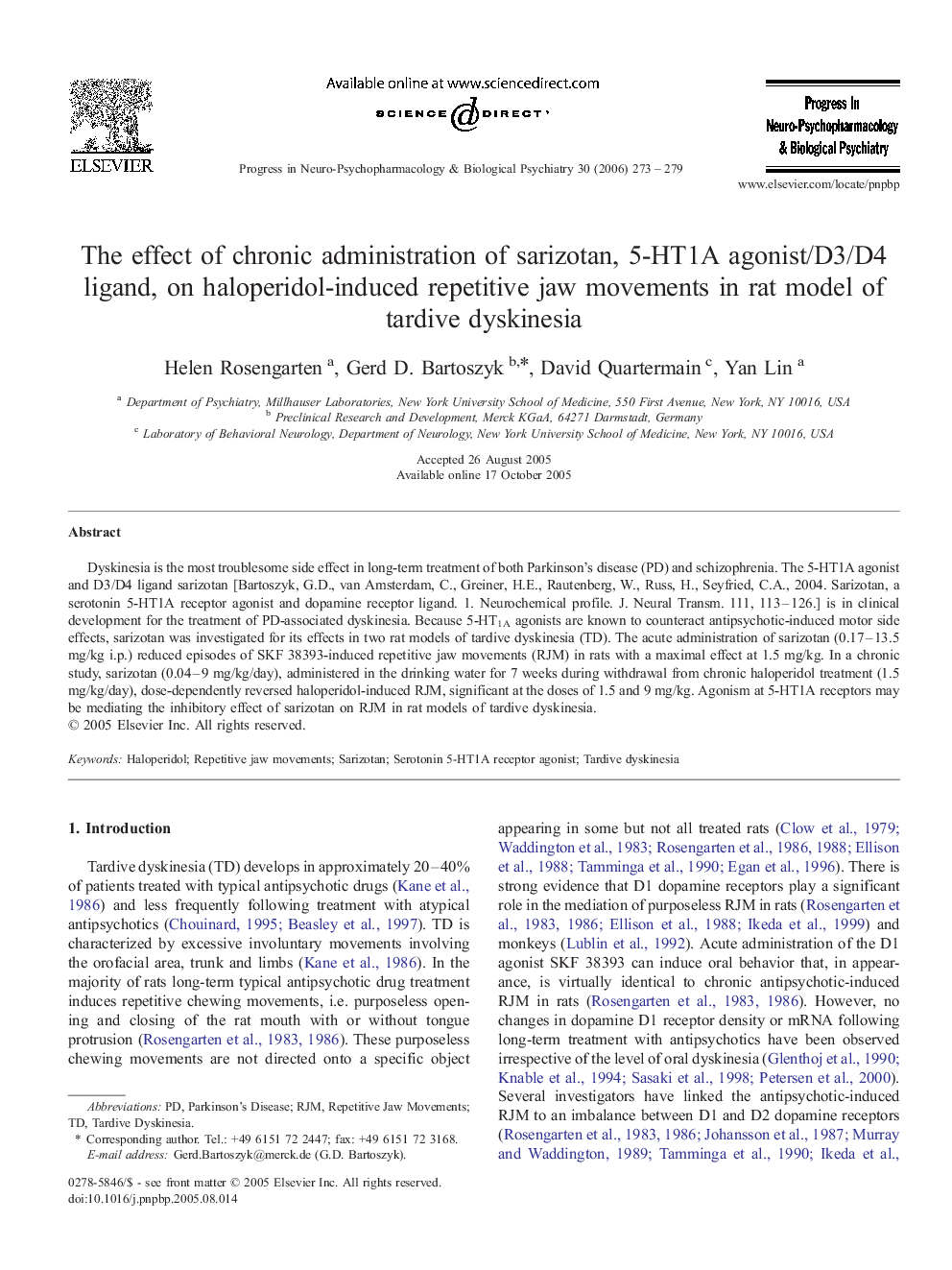| کد مقاله | کد نشریه | سال انتشار | مقاله انگلیسی | نسخه تمام متن |
|---|---|---|---|---|
| 2566242 | 1128077 | 2006 | 7 صفحه PDF | دانلود رایگان |

Dyskinesia is the most troublesome side effect in long-term treatment of both Parkinson's disease (PD) and schizophrenia. The 5-HT1A agonist and D3/D4 ligand sarizotan [Bartoszyk, G.D., van Amsterdam, C., Greiner, H.E., Rautenberg, W., Russ, H., Seyfried, C.A., 2004. Sarizotan, a serotonin 5-HT1A receptor agonist and dopamine receptor ligand. 1. Neurochemical profile. J. Neural Transm. 111, 113–126.] is in clinical development for the treatment of PD-associated dyskinesia. Because 5-HT1A agonists are known to counteract antipsychotic-induced motor side effects, sarizotan was investigated for its effects in two rat models of tardive dyskinesia (TD). The acute administration of sarizotan (0.17–13.5 mg/kg i.p.) reduced episodes of SKF 38393-induced repetitive jaw movements (RJM) in rats with a maximal effect at 1.5 mg/kg. In a chronic study, sarizotan (0.04–9 mg/kg/day), administered in the drinking water for 7 weeks during withdrawal from chronic haloperidol treatment (1.5 mg/kg/day), dose-dependently reversed haloperidol-induced RJM, significant at the doses of 1.5 and 9 mg/kg. Agonism at 5-HT1A receptors may be mediating the inhibitory effect of sarizotan on RJM in rat models of tardive dyskinesia.
Journal: Progress in Neuro-Psychopharmacology and Biological Psychiatry - Volume 30, Issue 2, March 2006, Pages 273–279